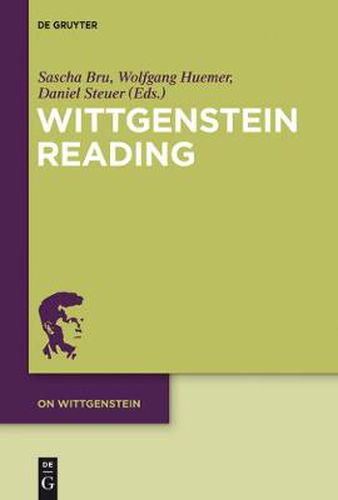Readings Newsletter
Become a Readings Member to make your shopping experience even easier.
Sign in or sign up for free!
You’re not far away from qualifying for FREE standard shipping within Australia
You’ve qualified for FREE standard shipping within Australia
The cart is loading…






Wittgenstein’s thought is reflected in his reading and reception of other authors. Wittgenstein Reading approaches the moment of literature as a vehicle of self-reflection for Wittgenstein. What sounds, on the surface, like criticism (e.g. of Shakespeare) can equally be understood as a simple registration of Wittgenstein’s own reaction, hence a piece of self-diagnosis or self-analysis.
The book brings a representative sample of authors, from Shakespeare, Goethe, or Dostoyevsky to some that have received far less attention in Wittgenstein scholarship like Kleist, Lessing,or Wilhelm Busch and Johann Nepomuk Nestroy. Furthermore, the volume offersmeans for the cultural contextualization of Wittgenstein’s thoughts.
Unique to this book is its internal design. The editors’ introduction sets the scene with regards to both biography and theory, while each of the subsequent chapters takes a quotation from Wittgenstein on a particular author as its point of departure for developing a more specific theme relating to the writer in question. This format serves to avoid the well-trodden paths of discussions on the relationship between philosophy and literature, allowing for unconventional observations to be made. Furthermore, the volume offersmeans for the cultural contextualization of Wittgenstein’s thoughts.
$9.00 standard shipping within Australia
FREE standard shipping within Australia for orders over $100.00
Express & International shipping calculated at checkout
Wittgenstein’s thought is reflected in his reading and reception of other authors. Wittgenstein Reading approaches the moment of literature as a vehicle of self-reflection for Wittgenstein. What sounds, on the surface, like criticism (e.g. of Shakespeare) can equally be understood as a simple registration of Wittgenstein’s own reaction, hence a piece of self-diagnosis or self-analysis.
The book brings a representative sample of authors, from Shakespeare, Goethe, or Dostoyevsky to some that have received far less attention in Wittgenstein scholarship like Kleist, Lessing,or Wilhelm Busch and Johann Nepomuk Nestroy. Furthermore, the volume offersmeans for the cultural contextualization of Wittgenstein’s thoughts.
Unique to this book is its internal design. The editors’ introduction sets the scene with regards to both biography and theory, while each of the subsequent chapters takes a quotation from Wittgenstein on a particular author as its point of departure for developing a more specific theme relating to the writer in question. This format serves to avoid the well-trodden paths of discussions on the relationship between philosophy and literature, allowing for unconventional observations to be made. Furthermore, the volume offersmeans for the cultural contextualization of Wittgenstein’s thoughts.